
View the complete article here.
Whether you own a skid steer or you require a regular skid steer rental for your business, it is helpful to know about the attachments that can be used to maximize the function of this powerful equipment. The right tools and attachments are essential to speed up project completion, minimize required manpower, and ensure quality work on the job site.
What is a Skid Steer?
As skid steer, sometimes referred to as a skid loader, is a compact engine-powered machine with a rigid frame. It is designed with arms that can be connected to a variety of attachments and tools. Typically, these machines are designed as four-wheeled vehicles. The driver has the option to move the right or left side wheels independently, enabling the machine to be turned with differential steering. Some skid steers have tracks instead of wheels to accommodate rough terrain.
If occasional use of a skid steer is needed, then rental might be the right solution. But there are advantages to owning this equipment, especially for landscapers and construction crews. The price of the skid steer depends on the operating capacity, measured by the weight that can be handled by the machine.
Rated Operating Capacity (ROC) has been outlined by the Associated Equipment Manufacturers. Small frame skid steers have less than 50 hp and can handle 1,750 pounds or less. Medium frame skid steers have between 50 and 70 hp, and their capacity ranges from 1,751 – 2,200 pounds. Large frame skid steers have over 70 hp, and the capacity is anything over 2,200 pounds. The smallest designs can be purchased for as little as $12,000, with the high capacity loaders running up to $60,000 in price.
Many construction experts agree that a skid steer is one of the most versatile pieces of equipment that can be used on a construction site. Since different attachments can be used, it is possible to perform a range of tasks with one machine. Applications include:
- Excavation
- Demolition
- Debris removal
- Grading
- Lifting
- Overhead work
- Loading
- Clearing and leveling
Since the skid steer has a compact design, it can often be used in small spaces where larger equipment can’t fit.
It is important to consider the site surface when choosing equipment for the construction. For example, skid steers use high ground friction, which means that fragile or soft surfaces can be ripped up by the tracks. If the terrain is difficult due to sand, snow, or mud, then skid steers with tracks will perform optimally. On the other hand, skid steers with wheels are the best choice when the ground is hard and evenly graded. The wheels perform optimally on landscaped sites, concrete areas, and pavement.
Vertical or Radial Lift?
In addition to capacity, you also need to think about other features, such as radial or vertical lift. At first glance, these designs seem to be quite similar. But there are important nuances that need to be considered when choosing equipment for your project.
A radial-arm design works by swinging out in an arc before the peak height is reached. In comparison, a vertical-lift machine is designed with arms that raise straight up.
If you are grading, excavating, or digging below the grade, then a radial-arm skid steer is likely the best choice. A vertical-lift skid steer is beneficial in situations such as loading dirt into a dump truck.
Attachments for Skid Steers
The attachments needed on each job site vary depending on the work at hand. The best solution is to evaluate your project and identify the tools to fit the situation. Here are some of the most common attachments used for skid steers:
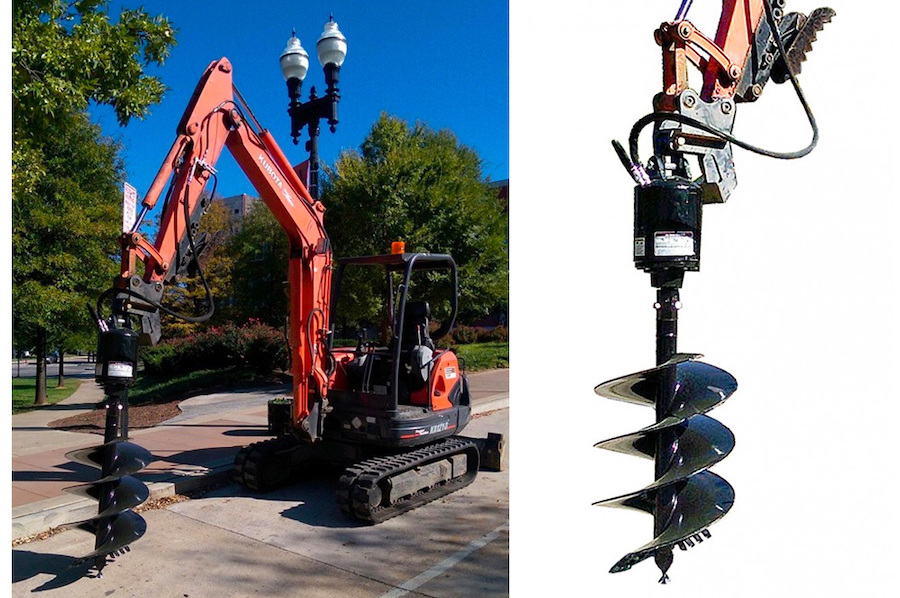
Augers: Holes for trees, footings, and fences can be easily drilled using an auger skid steer attachment. Different drive systems are available, so you should consider the type of soil before choosing the right auger for the job. Usually, the max depth is six feet, but extensions can be used if deeper holes are required. One of the benefits of using a skid steer with an auger is the precision and speed available when digging the holes. Heavy duty and extreme duty augers are available, as well as a variety of bits and extensions.
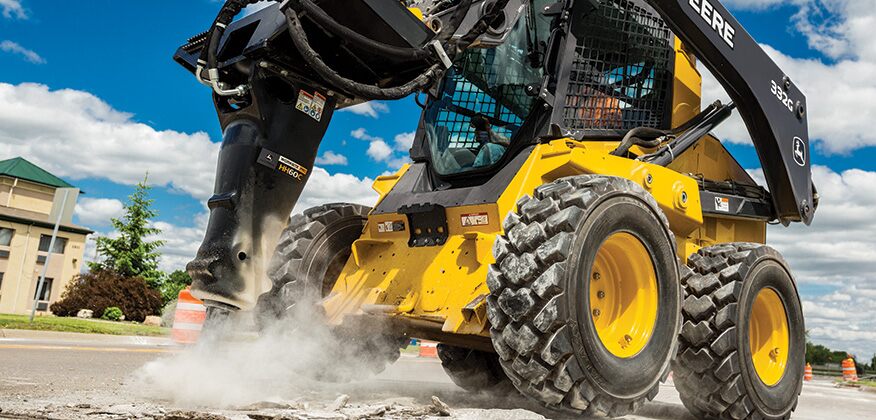
Rock Breakers: A breaker hammer on a skid steer uses hydraulics for demolition or breaking up large debris. For example, a rock breaker is useful for concrete and paving. These breaker bits simplify the process of breaking up rock or asphalt. The performance of the rock breaker is based on the number of blows per minute.
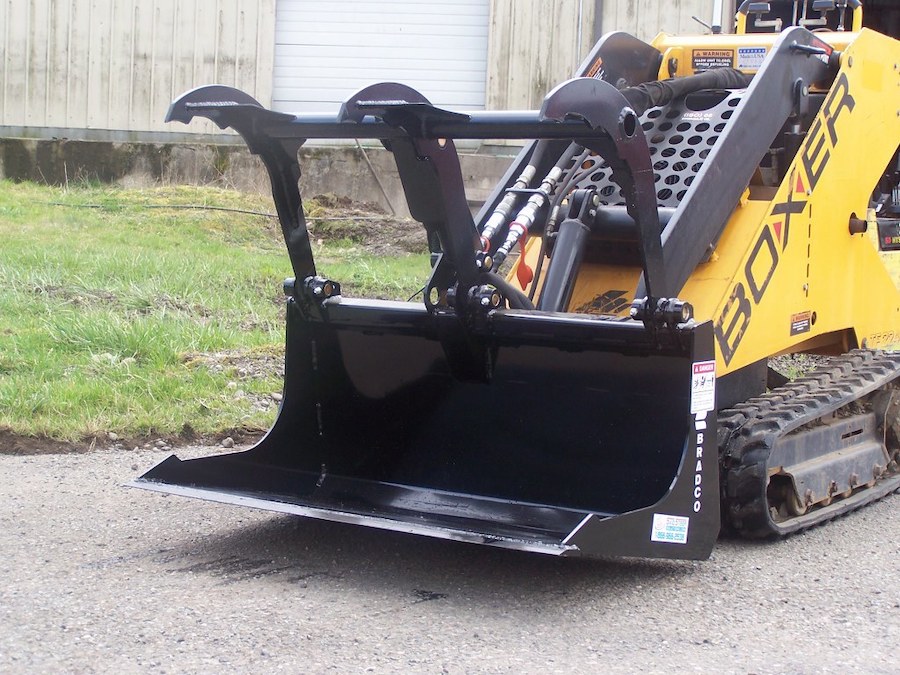
Grapple Buckets: Do you need a firm grip on big objects, such as logs or rocks? A grapple bucket makes it simple to move odd-size items. This attachment is designed with separate cylinders that run two grapple arms. Sometimes, grapple buckets are designed with a traditional bucket floor plate. Or an open area underneath is available if you would like the fine material to fall through. Sometimes grapple buckets are used when clearing land. Or this attachment is helpful when building supplies need to be moved on a job site.
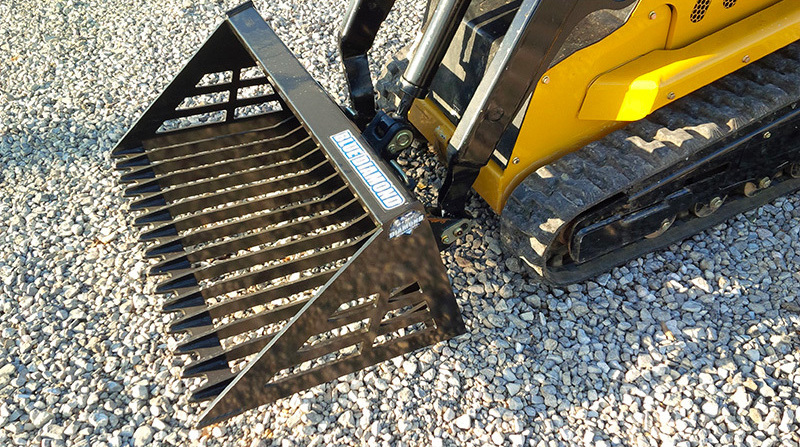
Rock Buckets: Material can be sifted and sorted efficiently using a rock bucket, which has slats in the top, bottom, and sides of the bucket. This attachment is common when removing large debris or clearing stones on open land. The design of skid steer rock buckets is to retain the debris and rock while grading and digging, leaving the finer dirt or soil on the site. It can be used for moving materials such as rock or firewood, sifting debris, or tilling the soil prior to planting.
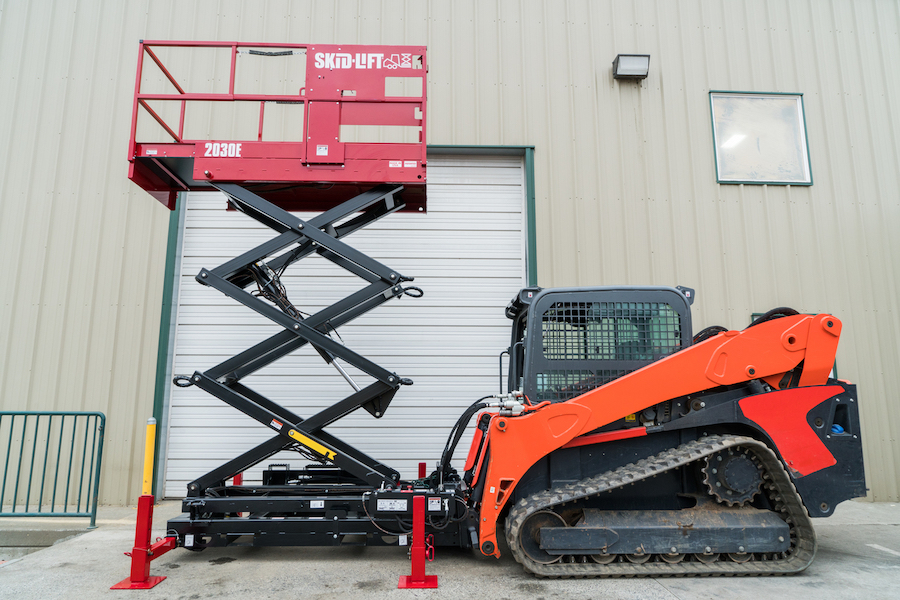
Forks: This attachment is the most effective solution when pallets of material need to be moved. Forks can also be used for 275-gallon totes and other bulky containers of materials. This equipment can be a good solution when building materials and lumber need to be stacked in a garage. Skid steer fork attachments are a great solution when load-bearing equipment is required, and can be used for transportation of construction materials, bales, pallets, harvest, and more.
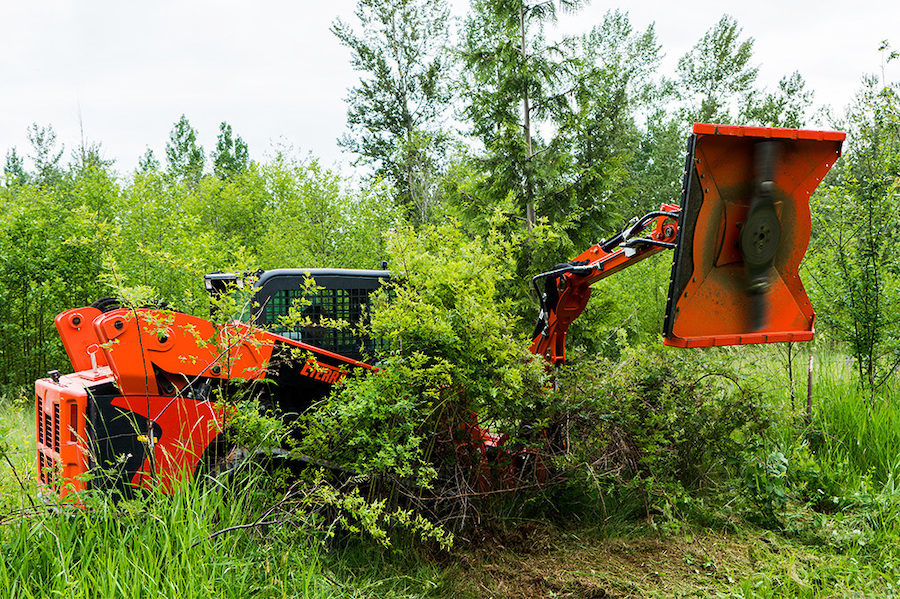
Brush Hogs: When land needs to be cleared, a brush hog attachment can be used to mow the overgrown areas. Often, a skid steer with a brush cutter attachment is used for the initial pass before other excavation equipment is brought in. Even the thickest clearing applications can be handled with ease due to the durability and performance of a brush cutter attachment. These attachments are designed with cutting widths between 60” and 78”.
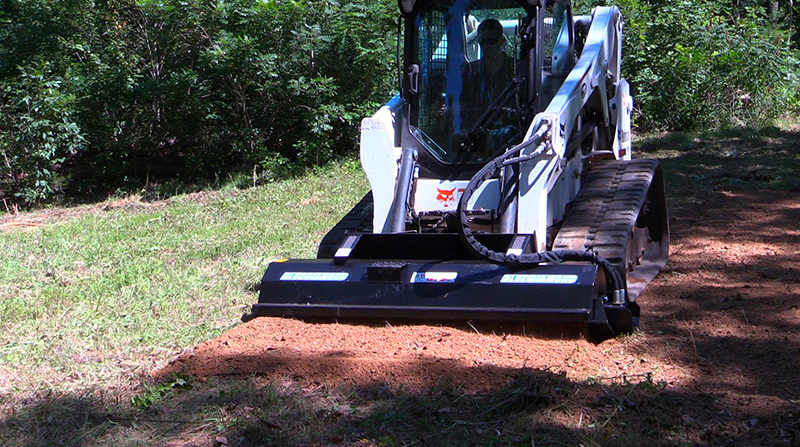
Tillers: Even the toughest soil can be turned using a skid steer with a tiller attachment. This solution is ideal if you need to till large areas for landscaping. The attachment breaks up the ground and can tear through hardened material and clumps in the soil. Double-edge, replaceable tines work efficiently and effectively in tilling and mixing in compost for soil preparation.
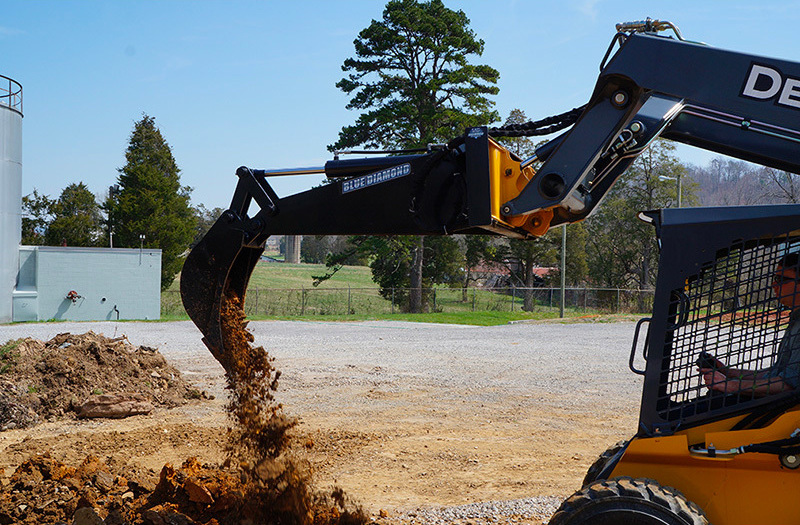
Backhoes: A backhoe attachment for your skid steer can make it easy to grapple, dig, and move materials on the job site. This tool is great for both landscaping and light construction applications to eliminate the need for a full backhoe to be brought to the site. Materials can be repositioned and adjusted. The attachment is ideal for light construction and landscaping. It can reach high to empty the backhoe bucket into a truck or wagon.
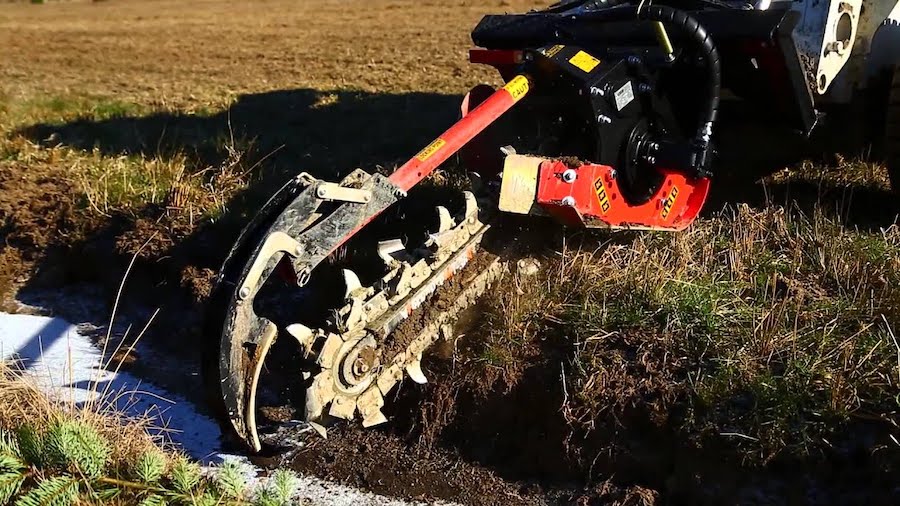
Trenchers: Before selecting a trencher, it is essential to identify the depth and width of the trench that you will be digging. Using a trencher is a great solution to save both time and money on the work required for trench creation. The design is perfect when the ground needs to be cut, even in the rockiest, toughest types of soil. In most situations, a boom length of 42 inches is sufficient for digging irrigation sprinkler systems, utility lines, footings, and drain pipes. But the trencher lengths come in a range of sizes between 30 and 60 inches.
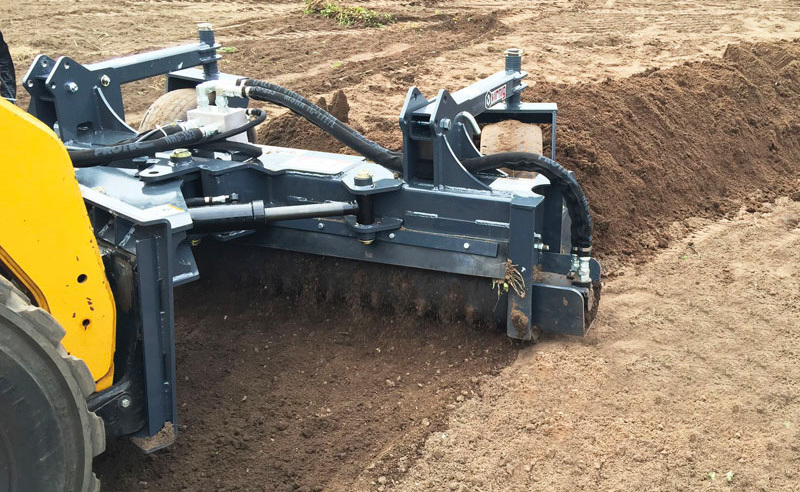
Rakes: Landscaping teams often use rake attachments on the skid steer to gather rocks and sticks quickly and efficiently. This attachment can also be used to cut out soil, aerate, and level the soil as the debris is collected. Not only does the rake attachment collect debris and rocks, but it can also be used to smooth and level soil.
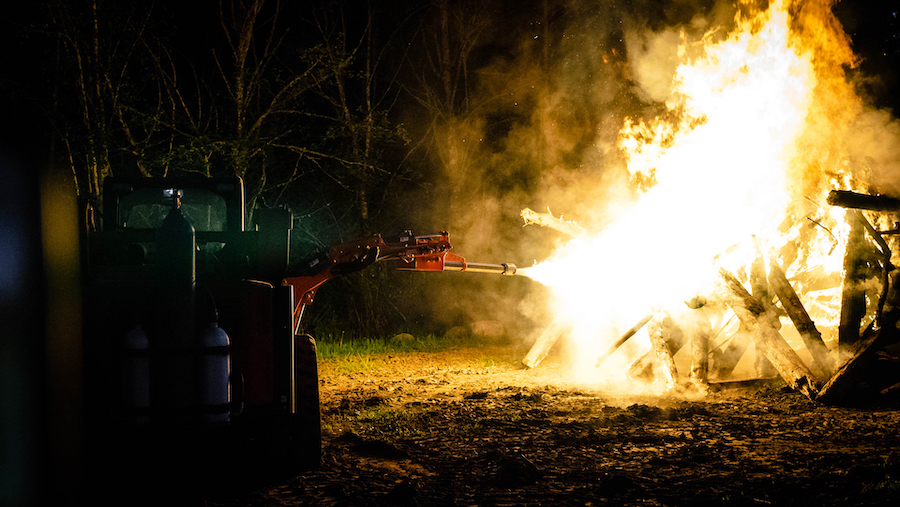
THE SKID STEER MOUNTED FLAMETHROWER: PRESENTED BY ETERRA ATTACHMENTS AND SKID STEER SOLUTIONS
The Flamethrower takes inspiration from the reach and versatility of the Eterra Boom-Arm. Another true original, over the last decade we’ve witnessed the Boom-Arm evolve from a rough prototype into a fully-featured commercial side-work mowing system, capable of operating a full arsenal of mower heads. Once the Boom-Arm System had been fully optimized, it became a natural question to wonder what type of head might come next. When someone volunteered the idea of a Flamethrower, we just couldn’t help ourselves.
Designing, manufacturing, selling and supporting the highest quality skid steer attachments and tools is what drives us. We’re in the equipment business because we love the machines, we love the attachments, and we love the challenge of providing solutions to customers with high standards who are looking to complete demanding jobs faster.
The challenge of innovating and manufacturing the world’s first Skid Steer Mounted Flamethrower was large, complex and required the total commitment of all our years of experience. The result is something that could have only been created through the partnership of Skid Steer Solutions and Eterra Attachments. No one else has the knowledge, the passion, the expertise, or the creative spirit required to pull off something as incomprehensible as a Flamethrower mounted on a Skid Steer.
HOW IT WAS MADE
The Skid Steer Mounted Flamethrower underwent the exact same rigorous process that all Eterra Attachments are subjected to. After the initial inspiration, we got to work drawing and designing the attachment, our team of engineers and mechanics then got to work manufacturing and assembling the required components to make this Flamethrower truly perform. From there, the Flamethrower was constantly tested and adjusted to ensure proper operation and guaranteed safety for both the operator as well as any bystanders.
“The process of putting this all together has been a lot of fun. I would venture to say that it’s been pretty difficult. There’s been a lot of putting it together and taking it apart again, testing stuff and seeing what is and is not working. Then putting it together again.
To tell you the truth, I’ve never built a Skid Steer Mounted Flamethrower before, so there was some learning along the way. We had to develop an ignition system in order to light the fuel that gets sprayed out of it. We had to put together a pressurized fuel system that could basically squirt the fuel enough distance safely without springing leaks. And then we had to put it all together into something that you could operate from inside the cab. So it’s been an adventure.” – Andy Neuman, Lead Engineer
The finished product is a perfect encapsulation of everything Eterra stands for. Superior design and manufacturing, with the attention-to-detail required to produce a skid steer attachment that truly stands apart. From the heavy-duty construction and welding, to the brushed metal finishes and crisp graphics, the Flamethrower is unmistakably an Eterra Attachments creation.
“We had to mechanically develop what size the Flamethrower was going to be, and what we could actually do. I have a really good designer that’s worked with us for a long, long time, and what I did was I took the base mechanical parts that I was going to need, like the internals, and I handed it to him and I said “hey, make an external cannon-looking, projectile, really boss looking item that we can fit all of this in to. And so he took it from there, designed the barrel, it’s all aluminum, polished – I think he did just a beautiful job. He put all that together and then we put all of our internal into that, and it’s all history.” – Rob Leib, President and Owner, Skid Steer Solutions, Inc.
A big part of what makes the Skid Steer Flamethrower possible is technology and collaboration with ThrowFlame Handheld Flamethrowers. Throwflame didn’t invent flamethrowers, they just perfected them. And that’s the same approach we took to innovating our Skid Steer version. You might not be able to purchase our Skid Steer model, but you can certainly purchase ThrowFlame’s XL18 and XL15.
View the complete article here.
How much does a skid steer cost, and what factors determine the price?
The price of a skid steer varies based on its rated operating capacity (ROC), ranging from as low as $12,000 for small frame loaders to up to $60,000 for high-capacity models.
What are the advantages of using a skid steer with tracks versus wheels, and how does terrain affect the choice?
Skid steers with tracks perform optimally in difficult terrains like sand, snow, or mud, while those with wheels are suitable for hard and evenly graded surfaces, such as landscaped sites, concrete areas, and pavement.










































